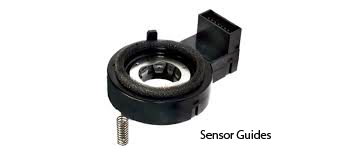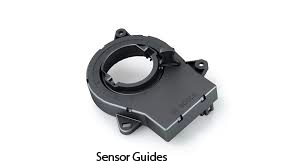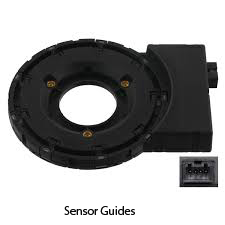Demystifying Steering Angle Sensor Calibration: A Step-by-Step Guide – 2024
Introduction
The Crucial Role of Steering Angle Sensors in Modern Vehicle Safety Systems
Your vehicle is an advanced device that incorporates many sensors that characteristic collectively to guarantee your safety even as using.One of these essential sensors is the guidance perspective sensor (SAS).The SAS plays a crucial function in lots of present day car safety systems, along with:
• Electronic Stability Control (ESC): ESC prevents skids and lack of control via locking the brakes on each wheel. With the help of SAS records, the ESC system can identify the motive force’s goal and practice the brakes thus.
• Lane Departure Warning (LDW): LDW warns the motive force while he or she drifts out of the lane by using mistake. The LDW system makes use of the SAS statistics to come across the lane function of the vehicle and it alarms if the car leaves the lane.
• Adaptive Cruise Control (ACC): ACC routinely continues the proper distance from the car in advance. Using the SAS data, the ACC gadget can adapt the cruise manage pace to the steerage perspective and avoid collisions.
It is clear that the SAS is a primary part of most of the existing automobile protection structures. Thus, it’s far crucial to make sure that the SAS is operating nicely and providing reliable records.

The Importance of Calibration for Accurate Steering Angle Readings
With time, the SAS may go out of alignment due to bumps, potholes, or normal wear and tear. This discrepancy leads to inaccurate steering angle readings that affect the safety features like stability control and ABS.
In such cases, calibration is needed. The calibration of the SAS refers to the centering of the SAS to the centre of the steering wheel. This ensures that the SAS provides accurate data to the vehicle’s safety systems.
Basics of Steering Angle Sensors
SAS are the invisible guardians of the road that watch over us with every bend. But what is the mechanism of these small wonders and why are they so crucial for our driving? Let’s unveil the SAS secrets, one twist at a time!
The Steering Angle Sensors Operation.
Imagine a tiny detective snuggly lodged in your steering column, constantly jotting down notes about its location. That is basically what the SAS is for! It utilizes different technologies such as magnetoresistance or potentiometers to determine the angle of the steering wheel with respect to its center. This information is then passed on to the brain of the vehicle, the Electronic Control Unit (ECU).
• Magnetoresistance Sensors: These rely on magnets and electric fields to detect the steering wheel movement. As the wheel rotates with the magnet, its effect on the electrical field changes giving the right angle.
• Potentiometers: These are similar to variable resistors where the angle is provided by the change in voltage as a result of rotation of the steering wheel.

The Integration of Steering Angle Sensors in Vehicle Stability and Safety
Consider the SAS as the safety orchestra’s conductor.It guides the car’s systems to work together like a well-rehearsed team:
• Electronic Stability Control (ESC): When swerving to avoid danger, the SAS informs the ECU which way you are turning. Second, the ESC applies selective braking to individual wheels, straightening the car and preventing spins or skids.
• Lane Departure Warning (LDW): Have you ever come too close to the edge? SAS will whisper to the LDW system, and a gentle chime will alert you that you are unintentionally crossing the lane.
• Adaptive Cruise Control (ACC): If you prefer to keep a safe distance without continuously adjusting the cruise control. The SAS informs the ACC about your steering angles and the ACC automatically regulates the speed according to the traffic density and curvature ahead.
The necessity of calibration to ensure proper performance.
As any musical instrument, the SAS may lose its tune with time. Bumps, potholes, and general damage can cause the sensor to be slightly misaligned. This implies that what the data it sends to the ECU is a little misleading, which may have an impact on the safety functions we depend on.
Calibration acts as an SAS corrector, bringing it back to its real center and providing accurate readings. Just as you would not tolerate slightly flat musical notes, you would not want inaccuracies in your steering angle readings.
Anatomy of a Steering Angle Sensor: Inside the Mystery Box
Have you ever imagined the force that propels the silent sentry of your wheel? Let’s focus on the internal composition of the SAS.
Components and Construction: Inner Workings Unveiled
Imagine a miniature detective agency inside your steering column.That’s the essence of the SAS, made up of these key components:
• Sensor element: This is the brain of the operation that converts the steering wheel movements into electrical pulses. It may be a magnetoresistance sensor consisting of magnets and electrical fields, or a potentiometer consisting of variable resistors.
• Gear mechanism: This acts as a translator, translating the rotary movement of the steering wheel to linear movement that can be read by the sensor element. Picture them as cogs in a clockwork.
• Circuit board: This is the control unit, which houses the electronic elements that process the signals from the sensor element and turn them into a form the car’s computer can understand.

Placement in the Vehicle: Key Positions for Accurate Angle Detection
Where this vital middle of information must be placed? The SAS is normally located in the steering column, close to the guidance gear. This high region offers it the direct get right of entry to the movements of the steerage wheel due to the fact it is the maximum accurate measurement.
But why simply one place? In the case of some excessive-stop SAS installations, sensors may be placed on the alternative aspects of the steerage column. This redundancy gives additional accuracy and reliability that guarantees continuity of statistics despite the fact that one sensor malfunctions.
Variations in Steering Angle Sensor Designs
Like fingerprints, now not all SAS are the identical.They are available a variety of flavors, every with its very own strengths and quirks:
• Magnetoresistance SAS: These are based on magnets and variable electromagnetic fields for excessive accuracy and reliability. They are typically found within the luxurious vehicles.
• Potentiometer SAS: These, consequently, act as variable resistors, which are the cheaper and greater handy option. But they are growing older.
• Optical SAS: They use mild beams and sensors that locate a coded disc attached to the guidance shaft. They are high-decision but are vulnerable to dust.
Functionality and Operation: The Unsung Hero Behind the Scenes
SAS plays an active role in the perfect harmony of your car’s performance. Let us lift the veil and watch how this unknown hero does its magic on the highway.
Real-Time Monitoring: The Role of the Steering Angle Sensor in Vehicle Dynamics
Imagine a hawk keeping an eye on every slight move of the steering wheel. In essence, that is what the SAS does! It unrelentingly monitors the steering angle in real-time, supplying the ECU, the brain of the car, with a constant stream of information. This information enables the car to realize what you want to do with your driving and react and adjust in real time.
Every turn, every swerve, every slight change – the SAS records everything.This real-time monitoring is crucial for various vehicle dynamics, including:
• Smooth cornering: SAS informs the suspension and steering systems the amount of adjustment when you make a smooth corner, which allows you to make a safe and comfortable turn.
• Precise lane tracking: Do you feel that your car never changes the lane on its own? The SAS whispers gently to the steering system, making small adjustments to ensure that you stay on the right course.
• Safe maneuvering: Whether it is avoiding an obstacle or making a sharp turn, the SAS data will help the car’s systems to act in a proper way to ensure your safety and stability.
Communication with the Electronic Stability Control (ESC) System
Imagine the SAS as the translator between you and the car’s guardian angel, the Electronic Stability Control (ESC) system. When you meet icy patches or suddenly maneuver to avoid hazards, the SAS tells the ESC where you want to go. On the contrary, the ESC enables strategic braking of individual wheels, stopping skids and spins, and allowing you to stay on your chosen path safely.
This ongoing flow of information improves the performance of the ESC. The ESC can respond quickly since the SAS gives accurate and immediate steering angle information, allowing you to maneuver tough situations with ease.
Adapting to Various Driving Conditions for Best Performance
The SAS is an adaptive partner, adjusting to different driving scenarios for optimal results. Regardless of whether you are cruising down a relaxed highway or maneuvering twisting mountain roads, the SAS calibrates its sensitivity and data collection to ensure accuracy and responsiveness.
On the highway, the SAS may focus on small changes for accurate lane tracking. On the other hand, on the winding mountain roads, it becomes even more sensitive to pick up your quick steering inputs for driving through sharp corners. This versatility ensures that your car stays stable and in control, adjusting naturally to different driving scenarios.
Conclusion: Steering Angle Sensor Calibration – Demystified!
As we finish discussing steering angle sensors (SAS), we have revealed how these silent warriors contribute to improving our safety and comfort while driving. We have also highlighted the importance of regular calibration to ensure that there are precise readings and properly functioning safety systems.
No matter your preference of hands-on maintenance or outsourcing the job to professionals, remember that a properly calibrated SAS acts as a silent watchman on the road. Take care of it, and it will take care of you by keeping you safe and ensuring that you have smooth rides one mile after another.
FAQS:
What is the calibration frequency for my SAS?
The rate is determined by your driving patterns and the actual guidelines for your car model.Generally, calibration is recommended after:
• Wheel alignment
• Replacing steering or suspension components
• Seeing warning lights for traction control or stability control
• Any major bumps or impacts to the steering system
Is it possible for me to calibrate my SAS?
Newer cars have self-calibration functions and can be done with a basic reset procedure on your own. Nevertheless, for more advanced calibrations, it is better to ask a professional mechanic or use a dedicated diagnostic tool.
What is the cost of SAS calibration?
The price depends on the chosen procedure and the shop’s hourly rate. DIY approaches that involve diagnostic tools are cheaper, while professional calibration at a mechanic may cost up to $100 to $200.
